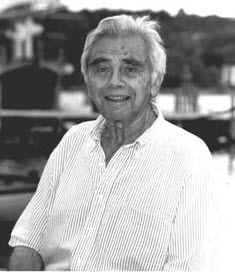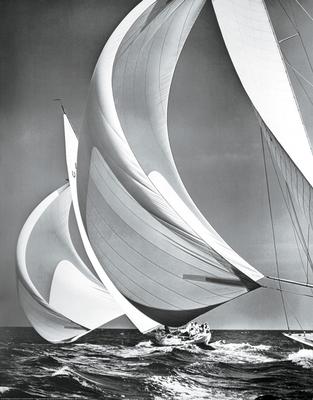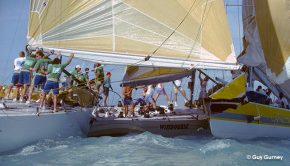Remembering Stanley Rosenfeld
Published on June 8th, 2016
 Sailing photographers record the action and archive the sport’s history. No story is complete without an image, and if a picture is worth a thousand words, than Stanley Rosenfeld has written a lot of words. About a billions of them.
Sailing photographers record the action and archive the sport’s history. No story is complete without an image, and if a picture is worth a thousand words, than Stanley Rosenfeld has written a lot of words. About a billions of them.
Rosenfeld (1913-2002) and his sons were the creators of the Rosenfeld Collection, considered to be one of the largest libraries of maritime photographs in the United States. At nearly one million pieces, the collection encompasses all forms of boating recreation and competition.
With his images all very well documented, he truly was a curator of sailing history. The people, the designs, the technology.
Rosenfeld’s work had a real sense of art to it that people appreciated and magazines wanted. Rosenfeld contributed to more than 20 books and hundreds of magazine articles on yachting, and produced many cover photos. His work led to his induction in the America’s Cup Hall of Fame.
Rosenfeld’s impact on marine photography continues today through the photographers he has influenced….
Daniel Forster:
“He was the dean of American yachting. He was the person who photographers today aspired to be.”
Onne van der Wal:
“Stanley Rosenfeld was the forerunner of marine photography as we know it today. He pioneered it, he was the master of his craft and with such basic and cumbersome tools produced some of the most iconic images in sailing today. Rosenfeld was to marine photography what Ansell Adams was to landscape photography. He has definitely influenced my photography of boats over the years! Especially classic sailboats.”
 Billy Black:
Billy Black:
“What most impressed me about Stanley was his kindness. He never let the business of photography get in the way of always being a gentleman. It’s that part of his spirit I hope to carry forward.”
Dan Nerney:
“Stanley was and remains an icon of American marine photography today and the Rosenfeld name and the Rosenfeld Collection still provide an inspiration for marine photographers. One day in his darkroom, he revealed to me several of the tricks that they used to do in the darkroom with negatives that we are able to do so easily today with Photoshop. He was indefatigable when on the water, often to the surprise of us younger snappers, and he was always a man of good cheer. He was a consummate professional photographer and gentleman.”
Guy Gurney:
“I recall a day I spent with Stanley during the 1992 America’s Cup. He was, as usual, charming and funny, and a pleasure to work alongside. But what struck me was that while I, like the others, was staggering under the weight of three cameras with motor drives, fitted with huge long lenses–300, 500 and 600mm–Stan was armed with a single non-motorized 35mm body with a modest zoom lens.
“That day I rattled off maybe a dozen rolls of film, and I suppose I got some good images, I don’t remember. We photogs sounded like a machine-gun battery every time the Cup yachts went near each other. But Stanley worked differently. Every now and then you’d hear a quiet click from his direction, and you’d know he’d made an image. That day he used only one roll of film. Later I spoke with the magazine editor for whom he was shooting, and she told me that every picture on that roll was a winner–sharp, well-exposed, perfectly composed and a great image. At this point Stanley was 79 years old and getting frail, but still every inch a pro.”
The Rosenfeld Collection was purchased for $1.8 million by Mystic Seatport in 1984.









 We’ll keep your information safe.
We’ll keep your information safe.